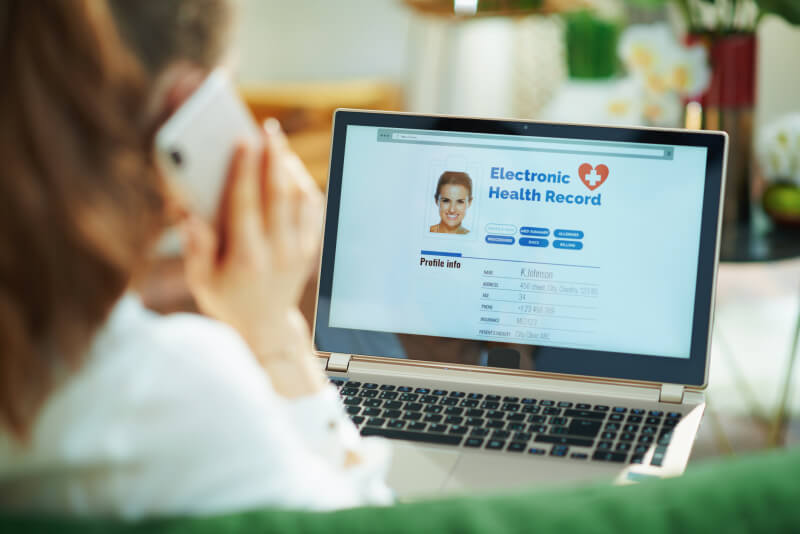A patient’s medical records are crucial to their diagnosis and treatment, and keeping this information available and transparent between doctors and hospitals is an essential component of proper modern healthcare. This is why doctors and hospitals link and share medical records, allowing for easier access and more effective treatments.
So are all medical records that a patient has linked? Ideally, yes; more and more hospitals and health systems have been working towards expanding providers’ ability to receive, distribute, and share various patient records and information across various medical care sources. This includes both their own health systems and unaffiliated patient care settings and hospitals. However, universal sharing still hasn’t been achieved because of certain barriers such as lack of electronic resources and interoperability.
Any medical records that a patient’s various health providers will need to know are linked and shared between hospitals and clinics that use compatible systems. A patient’s linked medical records should contain information on your personal health, medical history, and health background.
This will include history of diagnoses, medical histories, allergies, immunization dates, and any notes on your health data. Prescribed medications, billing records, and test results can also be included.
Some patients may be unsure with the idea of linked medical records, and may wonder who actually can access your patient data. There are certain entities and individuals with rights to medical record access; these are known as covered entities by HIPAA, meaning that they can access patient medical records under certain guidelines.
Covered entities generally include medical healthcare professionals, doctors, facilities, technology providers, payers like health insurance and Medicare, and the government. Covered entity groups have strict rules surrounding their access to EHR system medical records. These guidelines include:
Medical records are typically shared electronically between all healthcare providers, including doctors, hospitals, healthcare organisation systems, pharmacies, laboratories, clinics, medical imaging facilities, and any other health care provider who might benefit from seeing patient records. This saves patients the time and cost of possibly taking tests they’ve already taken, and saves doctors the time of waiting for results by seeing information already available.
By giving medical professionals greater access and accessibility to patients’ digital medical records, they can better update your information, check and coordinate your history for known conditions and allergies, and generally ensure they make the best choice for your diagnosis and treatment.
Digitizing and linking medical records was a great step forward for the healthcare provider community. Medical records used to be kept on paper charts, meaning sharing records between hospitals and primary care doctors was difficult and costly. By transferring medical records to digital electronic systems, providers could now give patients more reliable prescribing and treatments, as doctors could better and more safely coordinate with each other.
There is also the practical advantage of keeping important records on digital files rather than paper charts, as paper charts are susceptible to damage from weather, fires, and other possible issues, while digital files are safe as long as they’re stored properly.

In 2017, 76% of hospitals and health systems reported successful electronic sharing of medical records with other hospitals or health systems in their same system, and 74% reporting the ability to do it with hospitals outside their system. This is up from just 30% EHR implementation in 2012, meaning significant improvements have been made in the last few years towards efficient personal health record sharing.
As expected, larger hospitals have a greater ability to share electronic health record data with other health providers, with 91% of large hospitals reporting sharing capabilities. Small hospitals report greater difficulty achieving this, with just 59% of smaller health systems and hospitals reporting medical patient record sharing with outside providers. Large hospitals have a greater capacity for information integration, with more staff and resources to implement these newer systems.
While the increase over the last few years is a positive, it still isn’t universal, making it difficult for millions of patients across the country to properly access and share their electronic medical record data with different doctors and hospitals.
There are certain barriers still standing in the way for hospitals and health systems to achieve complete universal electronic record sharing. Some of these barriers include:
There is also the issue of providers simply not using the information electronically forwarded to them from outside sources, with one study finding that 33% of health provider respondents saying they rarely or never used this information. Some of the reasons for this include:
With so many difficulties still surrounding certain digital medical record systems and existing EHR vendors, Calysta EMR is here to help medical aesthetics clinics manage their patients’ medical information. Calysta EMR offers aesthetics clinics the aesthetic focus they need to truly get the most out of their EMR system. Some of the additional health app benefits of Calysta EMR include:
Equip your aesthetic clinic with Calysta EMR, the best aesthetic-focused EMR available, with all the tools and features to truly be the all-in-one platform to work with your patients and other providers.
Learn more: What Does an Electronic Medical Record Include?